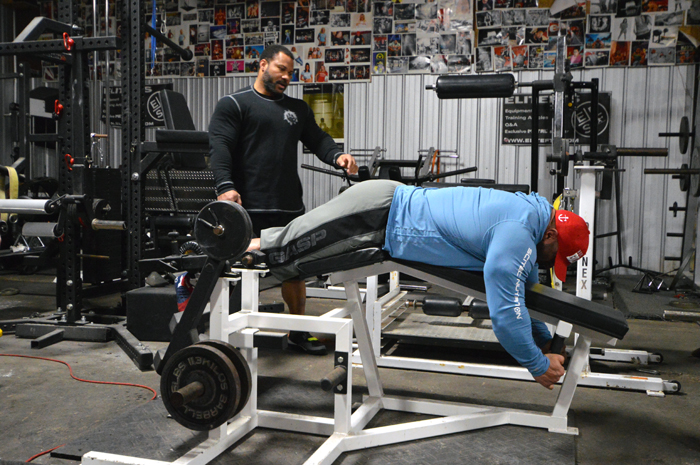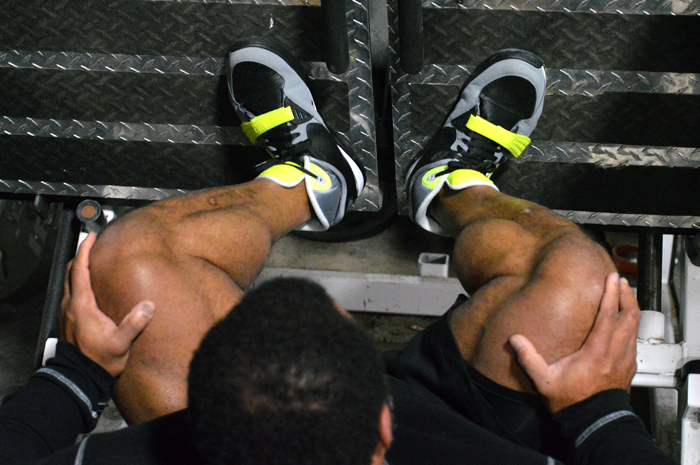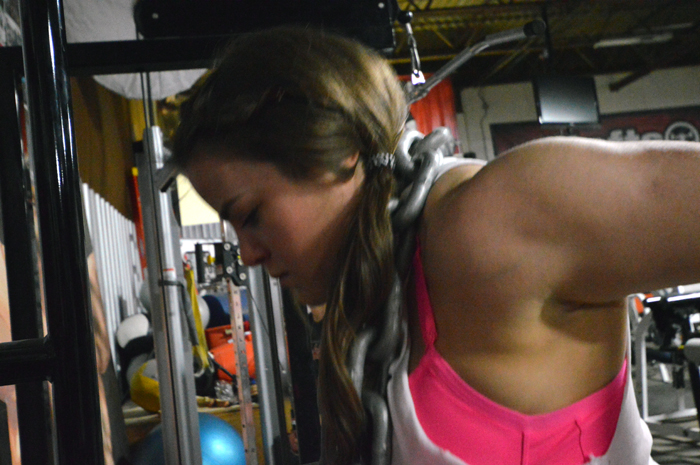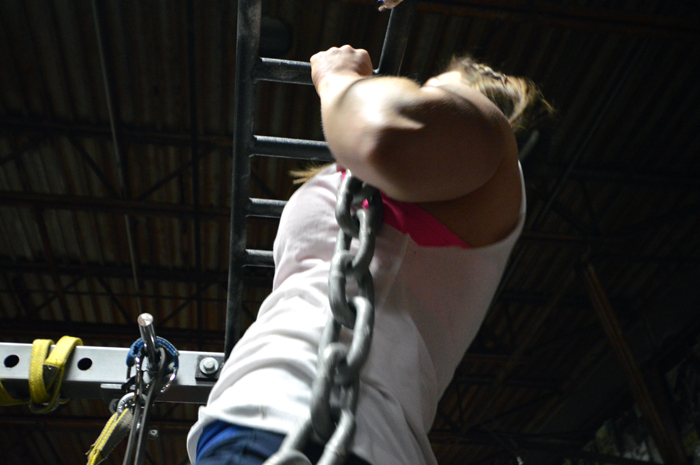PUMPED
New member
[h=2]Building muscle is as simple as turning on protein synthesis, right?[/h]At its core, gaining muscle mass is supposed to be pretty simple;even a meathead can do it. Pick (heavy) things up and put them down, eat enough food, take your supplements and ensure enough rest and recovery.
More specifically, it’s a workout by workout process. The more you crank up protein synthesis each time you train, the more you’ll grow. It’s this consistent, even relentless forward movement that makes monsters...right?
In this article, I'm going to keep the science simple and give you a glimpse into the complexity of what goes into building muscle mass at a biological level. In particular, you’ll gain some insight into why some trainees grow like weeds and some may not grow at all.

[h=2]Seems Logical[/h]Performing a long-term training study is a resource-intensive endeavor. Because it makes logical sense to assume that ergogenic aids that allow you to train harder [e.g., creatine(1)] and nutritional supplements that promote anabolism [e.g., post-workout protein and carbohydrate(2)] will have a cumulative effect, less expensive, acute studies are relevant.
More specifically, when it comes to bodybuilding, one might expect that those who respond with the greatest post-workout increase in myofibrillar protein synthesis (MPS) would logically end up with the greatest gains in muscle size. To wit, short term post-exercise (3 hour) anabolic measures are indeed reflective of protein balance over the 24 hours after a training session(3). Statistically, one might expect significant correlation between acute, post-workout protein synthesis and long-term muscle growth. Setting the muscle-building wheels in motion is part of the rationale for peri-workout recovery supplementation, which I’ve written about before.
[h=2]Logic Prevails[/h]Short-term, acute studies do indeed often parallel long-term results. When comparing milk with soy protein based drinks (matched for macronutrients), milk wins out in terms of acute protein balance(4) and muscle gain over 3 months of training(5). Post-exercise MPS measurements(6) also provide an internally consistent explanation for why high rep sets [30% of one rep maximum (30%1RM), taken to muscular failure] can grow muscle as well as more typical heavy resistance training (80%1RM)(7). [As a side note, loads this light, if not taken to failure, or used with blood flow restriction protocol would probably not produce much in the way of muscle mass(7-9) or strength gains(10).]

Similarly, when testing various intra-workout recovery supplement blends [carbohydrate, essential amino acids or a combination thereof(11, 12)], the acute pattern of acute hormonal responses (insulin and cortisol) and reduction of muscle breakdown explains why the carbohydrate / amino acid combo-consuming group grew the best over the course of training(13). (Note that this set of studies was done using the same subjects, so we’re not comparing responses in one set of subjects to adaptations in another group of trainees.)
[h=2]Logic Falls Flat on Its Face[/h]So, just to be sure a prolific research group at McMaster University (Canada) set out to test what might seem obvious: Is post-exercise muscle protein synthesis (when optimized with a post-workout protein / carb shake), at the start of training, predictive of the muscle mass gains that those same individuals will make over the next 16 weeks of training(14)?
You can probably tell what I’m leading up to. The correlation between MPS over the six hour post-exercise period at the start of training and post-training muscle growth (quad) was not statistically significant. Not even close. They found the correlation between changes in MPS and muscle size to be 0.01, just about as close to a random association as possible. They concluded: “Clearly, however, acute early measures of MPS are not proxy measures for hypertrophy or hypertrophic potential within the same individual(14).”

[h=2]So, What Gives?[/h]How can this be? What on earth could explain such a strange finding, you ask? Let’s take a closer look at some possibilities:

In an upcoming article, we’ll take a look at some research that uses a wider lens to elucidate why some people grow like weeds, and others may realize little or even no muscle growth whatsoever over the course of months and months of resistance training.
More specifically, it’s a workout by workout process. The more you crank up protein synthesis each time you train, the more you’ll grow. It’s this consistent, even relentless forward movement that makes monsters...right?
In this article, I'm going to keep the science simple and give you a glimpse into the complexity of what goes into building muscle mass at a biological level. In particular, you’ll gain some insight into why some trainees grow like weeds and some may not grow at all.

[h=2]Seems Logical[/h]Performing a long-term training study is a resource-intensive endeavor. Because it makes logical sense to assume that ergogenic aids that allow you to train harder [e.g., creatine(1)] and nutritional supplements that promote anabolism [e.g., post-workout protein and carbohydrate(2)] will have a cumulative effect, less expensive, acute studies are relevant.
More specifically, when it comes to bodybuilding, one might expect that those who respond with the greatest post-workout increase in myofibrillar protein synthesis (MPS) would logically end up with the greatest gains in muscle size. To wit, short term post-exercise (3 hour) anabolic measures are indeed reflective of protein balance over the 24 hours after a training session(3). Statistically, one might expect significant correlation between acute, post-workout protein synthesis and long-term muscle growth. Setting the muscle-building wheels in motion is part of the rationale for peri-workout recovery supplementation, which I’ve written about before.
[h=2]Logic Prevails[/h]Short-term, acute studies do indeed often parallel long-term results. When comparing milk with soy protein based drinks (matched for macronutrients), milk wins out in terms of acute protein balance(4) and muscle gain over 3 months of training(5). Post-exercise MPS measurements(6) also provide an internally consistent explanation for why high rep sets [30% of one rep maximum (30%1RM), taken to muscular failure] can grow muscle as well as more typical heavy resistance training (80%1RM)(7). [As a side note, loads this light, if not taken to failure, or used with blood flow restriction protocol would probably not produce much in the way of muscle mass(7-9) or strength gains(10).]

Similarly, when testing various intra-workout recovery supplement blends [carbohydrate, essential amino acids or a combination thereof(11, 12)], the acute pattern of acute hormonal responses (insulin and cortisol) and reduction of muscle breakdown explains why the carbohydrate / amino acid combo-consuming group grew the best over the course of training(13). (Note that this set of studies was done using the same subjects, so we’re not comparing responses in one set of subjects to adaptations in another group of trainees.)
[h=2]Logic Falls Flat on Its Face[/h]So, just to be sure a prolific research group at McMaster University (Canada) set out to test what might seem obvious: Is post-exercise muscle protein synthesis (when optimized with a post-workout protein / carb shake), at the start of training, predictive of the muscle mass gains that those same individuals will make over the next 16 weeks of training(14)?
You can probably tell what I’m leading up to. The correlation between MPS over the six hour post-exercise period at the start of training and post-training muscle growth (quad) was not statistically significant. Not even close. They found the correlation between changes in MPS and muscle size to be 0.01, just about as close to a random association as possible. They concluded: “Clearly, however, acute early measures of MPS are not proxy measures for hypertrophy or hypertrophic potential within the same individual(14).”

[h=2]So, What Gives?[/h]How can this be? What on earth could explain such a strange finding, you ask? Let’s take a closer look at some possibilities:
- Maybe this is a fluke study? Well, this lack of correlation has been observed previously. A 2009 study found no correlation between MPS (24hr post-exercise) and fiber hypertrophy. Those researchers wisely noted that it may be overly simplistic to assume a linear (first order) correlation between acute MPS early in training and training-induced fiber hypertrophy(15).
- If everyone had grown the same extent, it might be tough to find a correlation. There must be some measurement variability to produce a statistically significant correlation. However, this was not the issue here, as the McMaster researchers found a wide range of muscle growth, from ~nil to >25% increases in quad cross-sectional area. The spread in the post-exercise increase in MPS was even greater.
- As mentioned previously, acute post-exercise protein synthesis is representative of the 24 hour period after a training bout(3), suggesting that they didn’t cut their measurement period too short. They also found no correlation between muscle growth and MPS over the beginning or tail end of their measurement period.
- Was it a matter of protein breakdown (not synthesis)? Typically, protein synthesis is only measured because the relative increase in breakdown is roughly 25% (or less) of the rise in MPS(16). Also, breakdown and synthesis are typically correlated, so MPS is representative of muscle protein breakdown(17, 18). [Technical complexity in measuring breakdown is another reason why its often not measured, but some researchers feel this is a quite unfortunate ommision(19). More on this below.]

- Maybe some aspect of the diet, outside of the post-exercise period was at work: The McMaster group did not monitor in their subjects’ diets. However, previous work suggests that neither habitual intake of carbohydrate, protein, fat, nor essential amino acids (not even the branched chain amino acids) explain differences in growth between extreme responders and non-responders to when it comes to packing on muscle size(20).
- Maybe the MPS response at the start of training doesn’t represent what happensthroughout training? Indeed, being trained may actually increase (21) or potentially decrease (18) the MPS response, as well as shorten its duration(21). Training also shifts the relative proportions of contractile vs. other muscle proteins that are synthesized(22). Training thus reduces protein turnover in general(23), shifting protein balance positively as one grows(24). Quizzically, this would suggest that the more trained you are, the less protein you’d need. On the contrary, two recent meta-analyses suggest training-induced muscle growth is better with higher protein intake(25, 26).
- Perhaps the complication lies with some downstream signal set in motion by the mTOR enzyme complex(I), the master intracellular controller of protein synthesis(27). A few studies have found that phosphorylation of one particular molecule (p70S6K1) to be predictive of muscle growth(15, 28, 29) or protein synthesis [at least in young but not old subjects(8)]. However, that was not the case in the McMaster study at hand(14). Similarly, this study did not duplicate a correlation found between another molecule (4E-BP1) and protein synthesis(30). They did find that this latter signaler correlated with the evoked muscle growth, however(14). Part of this molecular messiness is likely due to a temporal dissociation (a time lapse of some sort) between (protein) metabolism and signaling, that even has the molecular biologists perplexed(15, 31).
In an upcoming article, we’ll take a look at some research that uses a wider lens to elucidate why some people grow like weeds, and others may realize little or even no muscle growth whatsoever over the course of months and months of resistance training.

